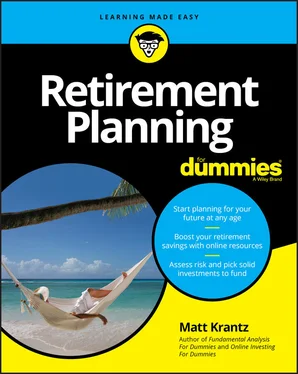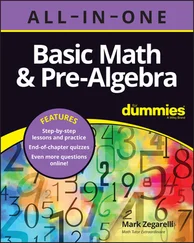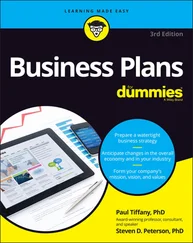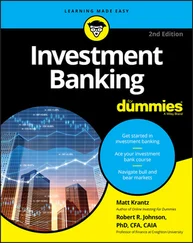If you’re just starting to think about retirement or are about to sign up for your first 401(k), consider starting at the beginning. That way, you’ll be ready for some of the more advanced topics I introduce later in the book.
If you’ve been planning for retirement for some time and have a strategy you think is working for you, you might want to skip to Part 2.
And if you want to know more about a specific topic, simply look it up in the index or check the table of contents and then flip to the appropriate page.
Part 1
IN THIS PART …
Put away your fear of retirement planning and learn to look at it as a positive way to build your future.
Gain a better understanding of your run rate, or how much you spend on a regular basis.
Determine how much you’ll need for retirement.
Learn the unique characteristics and benefits of various retirement accounts.
Measure how much risk you can tolerate in your retirement plan.
Chapter 1
Retirement Planning Is Up to You
IN THIS CHAPTER
 Understanding the importance of retirement planning
Understanding the importance of retirement planning
 Seeing how retirement planning has evolved
Seeing how retirement planning has evolved
 Discovering the new role for employers in retirement planning
Discovering the new role for employers in retirement planning
 Finding out how defined contribution plans have taken over pensions
Finding out how defined contribution plans have taken over pensions
 Getting an understanding of why Social Security isn’t enough for a comfortable retirement
Getting an understanding of why Social Security isn’t enough for a comfortable retirement
If you’re like most people, you want to retire someday. You might love your job and plan to work well into your 70s. Or maybe you’re part of the financial independence retire early (FIRE) crowd and want to escape your corporate ball-and-chain at 40 years old. The beauty of retirement planning is that the timing of your retirement could be up to you.
The goal of this book is to help you get excited about retirement planning. All too often, people are fearful of saving and investing for retirement. You might fear that you aren't saving enough or that you’ve started too late. Fear, I’ve found, isn’t a great motivator. Instead, it causes retirement-planning paralysis.
In addition, some people get so discouraged about being off track with their retirement planning that they just give up. They figure they’ll never catch up to where they think they need to be. Cautionary tales of people who have not saved enough only make people more depressed. You can find lots of those stories. Maybe people you know shared their stories with you.
Put the fear and discouragement aside for a minute. This retirement-planning book is different. I want you to embrace, not dread, retirement planning. What better way to plan for the future than picturing what you want it to look like and then making it happen? Expectations must match reality, but you might be amazed at what you can do when you set your mind to a goal.
Retirement planning is an important way to plot your financial course. And the course you set by reading this book will help make sure that your life 20, 30, 40, or 50 years from now is what you think it should be.
In this chapter, you find out why retirement planning is largely an opportunity for you to plan your own future, rather than have it dictated to you by your employer or government. You also see why getting your plan started as soon as possible pays off in a big way.
Blazing Your Own Retirement Plan
Retirement planning is simply about making sure you have resources available when you’re no longer generating them from your labor. However, the financial industry hijacked retirement planning, and now it’s all about deferred tax accounts, 401(k)s, and mutual funds. It wasn’t always that way.
More than a hundred years ago, more Americans relied on direct labor for their basic needs. In the late 1800s, for instance, about half of Americans were involved in farming. Back then, retirement planning was “an heir and a spare.” You wanted to make sure that you had enough kids to keep the farm running after you no longer wanted, or were able, to push a plow.
But now, less than 5 percent of the population touches food before it arrives at the grocery store. And people are more mobile, so your adult children are just as likely to live on the other side of the state as in your basement. In addition, birthrates are falling as more people decide against having children.
These shifts have turned money into the currency of retirement planning. Rather than having a house full of children who will take care of you in your grand old age, retirement planning is about having enough money when you can no longer work. Famous investor Warren Buffett addressed the importance of putting your money to work when he said, “If you don’t find a way to make money while you sleep, you will work until you die.”
Adding to the planning complexity is the fact that Americans are living much longer than they used to, as shown in Table 1-1. That news is great for humans, but it also means retirement planning for most people must stretch an additional 10 years or longer.
TABLE 1-1Life Expectancy of Americans
| Year You Were Born |
Life Expectancy (Both Sexes Combined) |
| 1955–1960 |
69.66 |
| 1960– 1965 |
70.11 |
| 1965– 1970 |
70.36 |
| 1970– 1975 |
71.43 |
| 1975– 1980 |
73.25 |
| 1980– 1985 |
74.37 |
| 1985– 1990 |
75.89 |
| 1990– 1995 |
75.65 |
| 1995– 2000 |
76.47 |
| 2000– 2005 |
77.18 |
| 2005– 2010 |
78.19 |
| 2010– 2015 |
78.94 |
| 2015– 2020 |
78.81 |
United Nations, Department of Economic and Social Affairs, Population Division (2019). World Population Prospects: The 2019 Revision; custom data acquired via website.
 If you want to slice-and-dice life expectancy data to glean more precise insights about typical lifespans, you’re in luck. The United Nations’ World Population Prospect data query tool is a treasure trove of life expectancy data. You can see forecasts going out for decades, how females fare compared to men, and the changes to your life expectancy as you get older. Dig into this fascinating data by using the tool at
If you want to slice-and-dice life expectancy data to glean more precise insights about typical lifespans, you’re in luck. The United Nations’ World Population Prospect data query tool is a treasure trove of life expectancy data. You can see forecasts going out for decades, how females fare compared to men, and the changes to your life expectancy as you get older. Dig into this fascinating data by using the tool at https://population.un.org/wpp/DataQuery/ .
Time to take a break from the history of retirement planning to answer the question you’re probably asking now that you’ve read this far: How long will you live? I am not getting fatalistic. Knowing how long you can expect to live is a big part of retirement planning. After all, a person who expects to live to 90 will save and work differently than someone likely to die younger.
Читать дальше

 Understanding the importance of retirement planning
Understanding the importance of retirement planning If you want to slice-and-dice life expectancy data to glean more precise insights about typical lifespans, you’re in luck. The United Nations’ World Population Prospect data query tool is a treasure trove of life expectancy data. You can see forecasts going out for decades, how females fare compared to men, and the changes to your life expectancy as you get older. Dig into this fascinating data by using the tool at
If you want to slice-and-dice life expectancy data to glean more precise insights about typical lifespans, you’re in luck. The United Nations’ World Population Prospect data query tool is a treasure trove of life expectancy data. You can see forecasts going out for decades, how females fare compared to men, and the changes to your life expectancy as you get older. Dig into this fascinating data by using the tool at 










